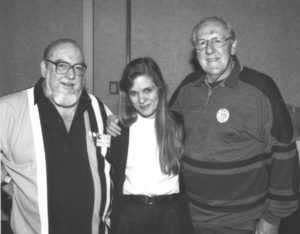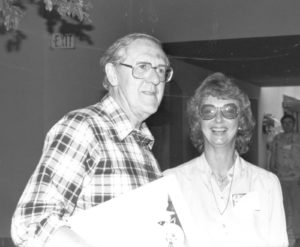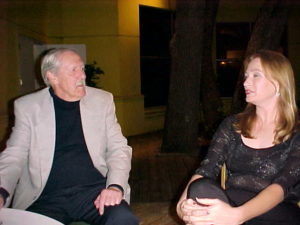Call for Papers: Monsters and Monstrosity A Special Issue of The Popular Culture Studies Journal
Thanks to Norma Jones for supporting special issue. Please consider submitting and share widely.
Call for Papers: Monsters and Monstrosity
A Special Issue of The Popular Culture Studies Journal
Guest Editor: Bernadette Marie Calafell, University of Denver
Scholars, such as W. Scott Poole and Kendall Phillips, have argued that monsters, particularly those in horror, reflect or correspond to the cultural anxieties of a society. These cultural anxieties are often connected to struggles for power around race, class, gender, sexuality, and ability. Thus, historical context and power are central to studies of monstrosity. Given that we are immersed in what may be considered a horror renaissance, both in film and television, increasing violence against people of color in the U.S., and dangerous and toxic performances of white femininity and masculinity, this is a ripe moment to explore the relationship between monstrosity and popular culture, both literally and figuratively. Thus, this special issues solicits manuscripts that take interdisciplinary approaches to explore the theoretical and methodological possibilities of monstrosity. What can employing monstrosity as a theoretical framework or analytical tool contribute to the study of popular culture? Key questions driving this special issue include: What can monstrosity teach us about Otherness? How can it be used resistively? Conversely, how can monstrosity be used as a tool of oppression? In what ways we can be unpack figures, such as Donald Trump, through the lens of monstrosity? What constitutes monstrosity? How might we understand history differently through the construct of monstrosity? What are the necessary future directions for the study of monstrosity and popular culture? Critical rhetorical, critical qualitative (including critical auto-methodologies), and performative approaches to monstrosity are welcomed.
Potential areas of interest include, but are not limited to:
Twin Peaks and monstrosity
Monstrosity and comics
David Lynch’s uses of monstrosity
NBC’s Hannibal
Adult Swim
Monstrous remakes
History and monstrosity
Afrofuturism and monstrosity
Monstrosity and agency
Monstrous bodies
Monstrous consumption
Monstrosity and adolescence
Monstrosity, menstruation, or menopause
Fatness and monstrosity
Excess and monstrosity
Chicanxfuturism and monstrosity
Celebrity culture and monstrosity
Performance and monstrosity
Wrestling and monstrosity
Intersectional approaches to monstrosity
Feminist possibilities of monstrosity
American Horror Story
Queerness and monstrosity
Monstrosity and sports
Disability and monstrosity
Class and monstrosity
Game of Thrones
Monstrous politicians and politics
The 2016 U.S. Presidential election
Autobiography and monstrosity
Monstrous methodologies
Hybridity and monstrosity
White femininity and monstrosity
Monstrosity and military culture
Monstrosity and toxic masculinities
Monstrosity and white masculinity
Monstrosity and religion
Monstrosity and temporality
Chicana feminism and monstrosity
Monstrosity and Orientalism
Questions can be directed to Bernadette Calafell at Bernadette.Calafell@du.edu. Please electronically send submissions (three documents, MS WORD, MLA) to Bernadette Calafell via email at Bernadette.Calafell@du.edu by December 1, 2017.
1) Title Page: A single title page must accompany the email, containing complete contact information (address, phone number, e-mail address).
2) Manuscript: On the first page of the manuscript, only include the article’s title, being sure not to include the author’s name. The journal employs a “blind review” process, meaning that a copy of the article will be sent to reviewers without revealing the author’s name. Please include the works cited with your manuscript.
3) Short Bio: On a separate document, please also include a short (100 words) bio. We will include this upon acceptance and publication.
Essays should range between 15-25 pages of double-spaced text in 12 pt. Times New Roman font, including all images, endnotes, and Works Cited pages. Please note that the 15-page minimum should be 15 pages of written article material. Less than 15 pages of written material will be rejected and the author asked to develop the article further. Essays should also be written in clear US English in the active voice and third person, in a style accessible to the broadest possible audience. Authors should be sensitive to the social implications of language and choose wording free of discriminatory overtones.
For documentation, The Popular Culture Studies Journal follows the Modern Language Association style, as articulated by Joseph Gibaldi and Walter S. Achtert in the paperback MLA Handbook for Writers of Research Papers (New York: MLA), and in The MLA Style Manual (New York: MLA). The most current editions of both guides will be the requested editions for use. This style calls for a Works Cited list, with parenthetical author/page references in the text. This approach reduces the number of notes, which provide further references or explanation.
For punctuation, capitalization, hyphenation, and other matters of style, follow the MLA Handbook and the MLA Style Manual, supplemented as necessary by The Chicago Manual of Style (Chicago: University of Chicago Press). The most current edition of the guide will be the requested edition for use.
It is essential for authors to check, correct, and bring manuscripts up to date before final submission. Authors should verify facts, names of people, places, and dates, and double-check all direct quotations and entries in the Works Cited list. Manuscripts not in MLA style will be returned without review.
We are happy to receive digital artwork. Please save line artwork (vector graphics) as Encapsulated PostScript (EPS) and bitmap files (halftones or photographic images) as Tagged Image Format (TIFF), with a resolution of at least 300 dpi at final size. Do not send native file formats. Please contact the editor for discussion of including artwork.
Upon acceptance of a manuscript, authors are required to sign a form transferring the copyright from the author to the publisher. A copy will be sent to authors at the time of acceptance.
Before final submission, the author will be responsible for obtaining letters of permission for illustrations and for quotations that go beyond “fair use,” as defined by current copyright law.



